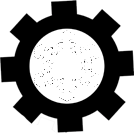
The Winter's Oasis Wiki
Romps and Reconstruction in Loka: Steam, Magic, and Mysteries in the Frozen Wasteland.

Dec 07, 2025
Search
Anthropomorphic
From Wikipedia, the free encyclopedia:
Anthropomorphism is a term coined in the mid 1700s[1][2] to refer to any attribution of human characteristics (or characteristics assumed or believed by some to belong only to humans) to animals or non-living things, phenomena, material states and objects or abstract concepts, such as God. Examples include animals and plants and forces of nature such as winds, rain or the sun depicted as creatures with human motivations, and/or the abilities to reason and converse. The term derives from the combination of the Greek ἄνθρωπος (ánthrōpos), “human” and μορφή (morphē), “shape” or “form”. Characters from the story of Alice in Wonderland and Toy Story are great examples of Anthropomorphism.
As a literary device, anthropomorphism is strongly associated with art and storytelling where it has ancient roots. Most cultures possess a long-standing fable tradition with anthropomorphised animals as characters that can stand as commonly recognised types of human behavior.